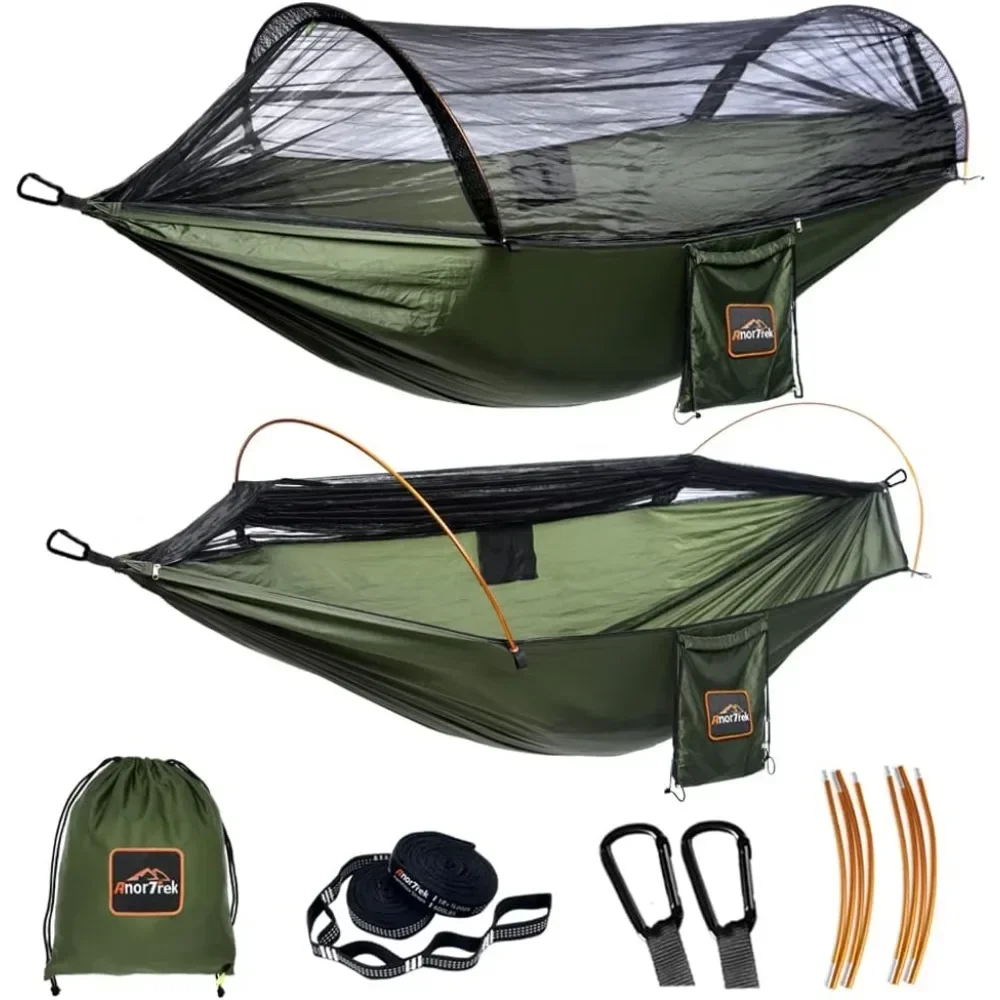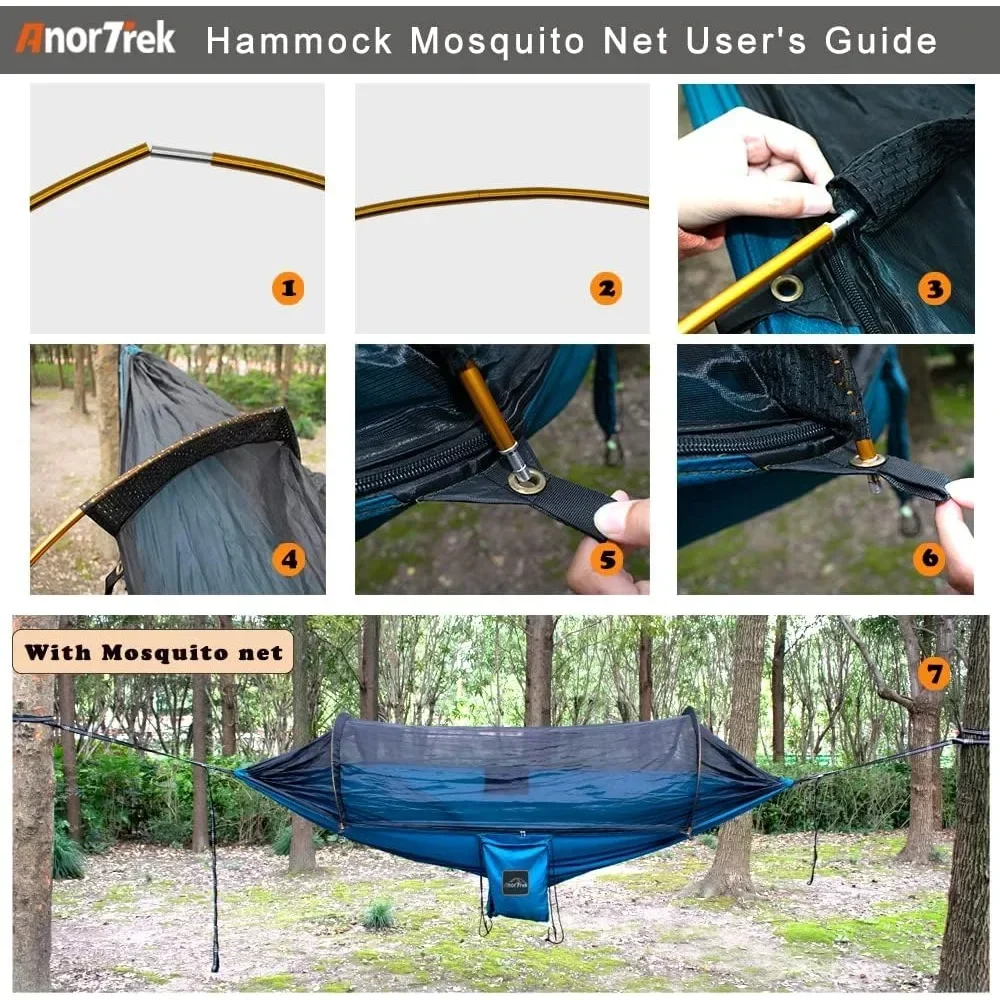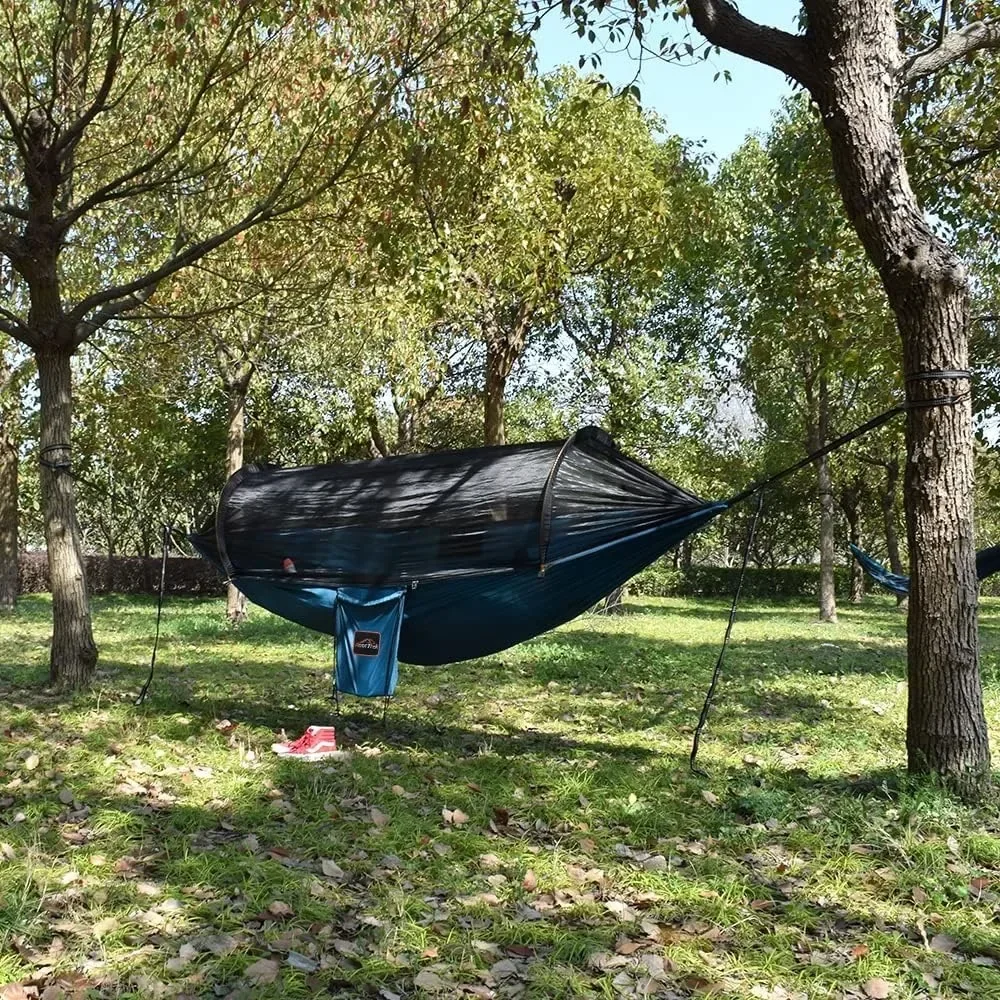Hammocks provide a perfect way to relax and unwind, whether you’re enjoying a peaceful day in your backyard or camping in the wilderness. However, the key to a comfortable and secure hammock experience lies in properly tying the hammock straps. This guide will walk you through the essentials of hammock strap setup, offering tips and techniques to ensure a safe and enjoyable relaxation experience.
Understanding Hammock Straps
What Are Hammock Straps?
Hammock straps are essential accessories used to secure your hammock to trees, posts, or other sturdy anchor points. Made from durable materials like nylon or polyester, these straps are designed to support the weight of the hammock and its occupants. Unlike traditional ropes, hammock straps are designed to distribute weight evenly, minimizing the risk of damaging trees and providing a more stable setup.
Why Use Hammock Straps?
Hammock straps offer several advantages over ropes. They are typically wider than ropes, which helps distribute the weight more evenly and reduces pressure on the anchor points. This is especially important for preserving the health of trees or other surfaces where you set up your hammock. Additionally, hammock straps are adjustable, allowing you to easily modify the height and tension of your hammock for optimal comfort.

Choosing the Right Hammock Straps
Length and Material Considerations
When selecting hammock straps, it’s crucial to consider both length and material. Straps typically range from 8 to 15 feet in length. Longer straps provide greater flexibility, especially when dealing with wider or larger trees. For most users, straps that are 10 to 12 feet long are sufficient.
The material of the straps is equally important. High-quality nylon or polyester straps are preferred for their strength and resistance to environmental factors. These materials are designed to withstand exposure to sun, rain, and other elements without deteriorating. Always check the weight capacity of the straps to ensure they can support both your weight and the hammock. Most straps with a weight capacity of 400 pounds or more are suitable for standard hammocks.
Additional Features
Some hammock straps come with added features such as built-in loops or buckles. Loops allow for quick and easy adjustments, while buckles can offer a more secure and adjustable fit. When choosing straps, consider what features will best suit your needs and preferences. Ensure that the straps you select match the requirements of your hammock and the environment where you will be using it.
Preparing the Anchor Points
Selecting the Right Anchor Points
Proper preparation of anchor points is crucial for a safe and stable hammock setup. Trees are the most common anchor points, but you can also use posts, beams, or other sturdy structures. When selecting trees, choose ones with a healthy, thick trunk. Avoid using trees with brittle bark or signs of damage, as these may not provide a secure anchor.
Checking the Surroundings
Before attaching the straps, clear the area around the anchor points of any debris or obstacles. This helps prevent accidents and makes the setup process easier. Additionally, consider the distance between anchor points. Ideally, the distance should be slightly greater than the length of your hammock to allow for proper sag and tension adjustment.
Protecting the Anchor Points
To protect the health of the trees or structures you’re using as anchor points, consider using tree-friendly straps or protective pads. These accessories help prevent damage to the bark and distribute the pressure more evenly. By using these protective measures, you ensure that your hammock setup is both secure and environmentally friendly.
Wrapping and Securing the Straps
Proper Wrapping Technique
The way you wrap the hammock straps around the anchor points is critical for ensuring a stable setup. Begin by placing one end of the strap around the anchor point. Wrap the strap around the tree or post in a way that distributes the weight evenly. Avoid wrapping the strap in a manner that causes it to dig into the bark or surface of the anchor point.
Securing the Strap
Once the strap is wrapped around the anchor point, secure it by threading it through the loop or buckle provided. Ensure that the strap is tight and does not slide or shift. If using a buckle, make sure it is fastened securely and does not loosen over time. Double-check the tightness of the strap to prevent any sagging or movement.
Checking for Stability
After securing the straps, it’s essential to check for stability. Gently tug on the straps to ensure they are securely fastened and that the hammock is evenly supported. Make any necessary adjustments to tighten or reposition the straps to achieve the desired level of stability and comfort.
Adjusting the Height and Tension
Setting the Height
Adjusting the height of your hammock is an important step in achieving the right level of comfort and stability. To adjust the height, move the straps up or down on the anchor points. The hammock should be at a height that allows you to easily get in and out of it while maintaining comfort.
Fine-Tuning the Tension
Proper tension adjustment is equally important. The hammock should have a slight curve when you’re sitting or lying in it. This ensures that the hammock is not too tight or too loose. Adjust the tension by tightening or loosening the straps as needed. Test the hammock by gently applying weight to ensure it is stable and comfortable.
Ensuring Evenness
Ensure that both straps are adjusted to the same height and tension. An uneven setup can cause the hammock to tilt or sway, affecting comfort and stability. Regularly check the balance of the hammock and make adjustments as necessary to maintain an even and comfortable position.

Testing the Setup for Stability
Performing a Test Sit
Before fully committing to your hammock setup, it’s essential to test the stability of the hammock and straps. Start by gently applying weight to the hammock by sitting or lying down gradually. Observe how the hammock and straps respond to your weight. Check for any signs of slipping, shifting, or instability.
Inspecting the Setup
Perform a final inspection of the straps and anchor points to ensure everything is securely fastened. Look for any signs of wear or damage on the straps, and check that the anchor points are holding firm. If you notice any issues, readjust the straps or anchor points as needed.
Safety Considerations
Safety is paramount when setting up your hammock. Always use straps and anchor points that are capable of supporting your weight. Regularly inspect your hammock setup for signs of wear or damage, and make necessary repairs or adjustments to ensure continued safety and stability.
Common Mistakes to Avoid
Using Inadequate Anchor Points
One common mistake is using inadequate anchor points. Ensure that your anchor points are sturdy and capable of supporting your weight. Avoid using weak or damaged structures, as they may not provide a secure hold for your hammock.
Incorrect Strap Length
Using straps that are too short can limit your options for anchor points and make the setup difficult. Choose straps of adequate length to ensure flexibility and ease of setup. Longer straps are generally better for accommodating different distances between anchor points.
Improper Wrapping
Improperly wrapping the straps around the anchor points can lead to instability and damage. Make sure to wrap the straps evenly and securely around the anchor points to distribute the weight properly. Avoid any wrapping techniques that could cause the straps to dig into the surface.
Overloading the Hammock
Be mindful of the weight capacity of both the hammock and the straps. Avoid exceeding these limits to prevent accidents. Overloading can cause the straps to fail or the hammock to collapse, leading to potential injuries.
Neglecting Regular Checks
Regularly inspect your hammock setup for signs of wear and tear. Ensure that the straps and anchor points remain secure and in good condition. Neglecting regular checks can lead to safety issues and compromise the stability of your hammock.

Conclusion: Embracing the Joy of Hammock Relaxation
Tying hammock straps correctly is fundamental to creating a secure and enjoyable hammock experience. By understanding the basics of hammock straps, choosing the right materials, preparing anchor points, and following proper tying techniques, you can ensure a stable and comfortable setup.
With practice and attention to detail, you’ll master the art of hammock setup and be able to fully embrace the relaxation and joy that a well-tied hammock provides. Whether you’re lounging in your backyard, camping in the wilderness, or simply enjoying a sunny afternoon, a properly set up hammock is a gateway to restful and blissful moments of relaxation.
